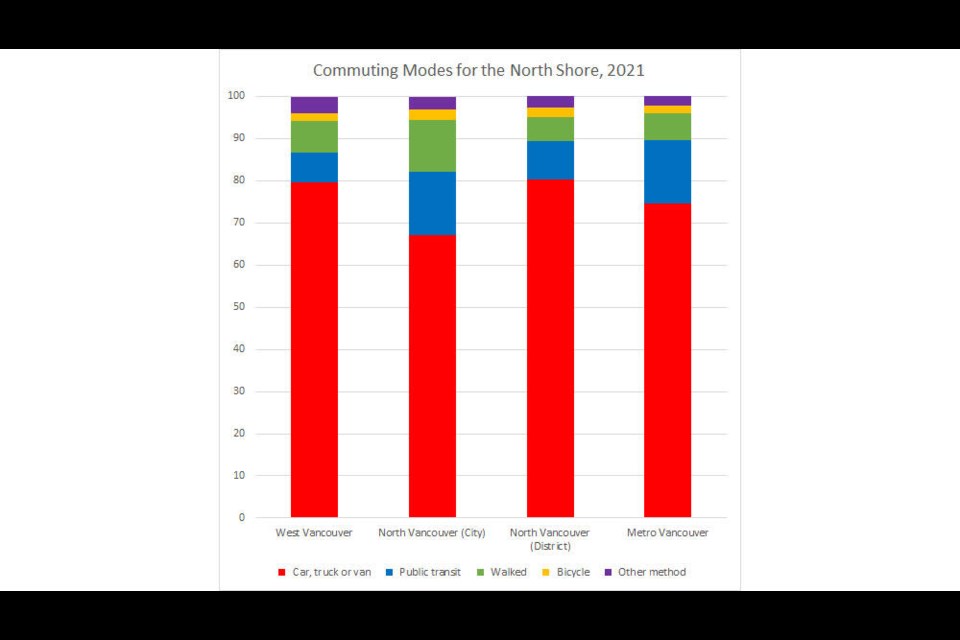Business-casual on top, sweatpants and slippers on the bottom.
North Shore residents were far more likely to be working from home last year than their Metro Vancouver neighbours, according to the latest census data.
The percentage of people who reported working from home in West Vancouver when the data was collected in May 2021 hit 40 per – well above the Metro Vancouver average of 26 per cent.
City of North Vancouver and District of North Vancouver residents were also more likely to be freed from the daily commute, with work-from-home rates of 31 per cent and 35 per cent respectively.
But other labour and commuting data revealed in the 2021 census will always have a large asterisk next to it, said Andy Yan, director of SFU’s City Program, thanks to the massive change COVID-19 brought to everyday life. That disruption makes the data less valuable for comparison purposes, as otherwise normal trends became skewed.
“It’s that damned pandemic,” Yan said. “It’s really screwed things up.”
North Shore transportation options
The presence of the virus almost certainly impacted people’s decisions on how to get around, with public transit taking the biggest hit.
In the District of North Vancouver Vancouver, 79.6 per cent of commuters chose their personal vehicle, up from 76.6 per cent in 2016, while the percentage of those taking transit fell from 11.6 to 9.1.
Not far behind, 79.6 per cent of West Vancouver residents were car-dependent for work, the stats show, compared to 74.8 per cent at the same time five years ago.
City of North Vancouver residents were third most likely in Metro Vancouver to still be commuting via active transportation – 15.1 per cent via transit, 12.2 per cent walking and 5.2 per cent cycling. The percentage of people who walk to work in the city is double the Metro average.
“As usual, the City of North Van is just a star in this,” Yan said.
In raw numbers, North Vancouver and West Vancouver had 20,490 workers commuting in from off of the North Shore, compared to 30,550 who reported to work from within one of the three local municipalities.
But North Shore residents are far less likely than their Lower Mainland cousins to live and work in the same municipality: 31 per cent in the District of North Vancouver, 37 per cent in the City and 36 per cent in West Van. The Metro Vancouver average in 2021 was 46 per cent. Yan noted, however, the percentages in each municipality have roughly doubled in the last 20 years, meaning the North Shore is losing its status as a bedroom community.
“Overall, it is a fairly positive story in where the municipalities are moving,” Yan said. “It goes into the role and development of these of these town centres.”
In the last census period, the North Shore’s population grew by 4.7 per cent, led mostly by the City of North Vancouver.
Where are we going?
Transit ridership has been rebounding, according to TransLink, but Yan said there appears to be a growing need for better transit service within the North Shore, as opposed to being oriented toward downtown.
“The system is not that great for having just cars. Folks inevitably need to consider other ways of getting around,” he said.
At the time of the 2021 census, COVID vaccines were just making their way into the arms of the working-age population. A lot has changed since then, in the pandemic and people’s living habits. Some people have returned to the office full time, but many still work on a home/office hybrid model.
Yan said there are also implications for developers who should be designing their new homes with that in mind.
“You don’t want your video conference to look like you’re in a hostage video,” he said.



